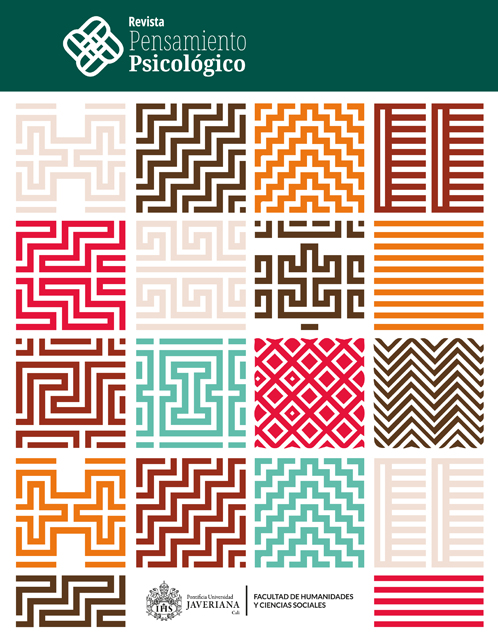Mediación tecnológica en el duelo: un análisis de los griefbots desde la psicología cultural
Contenido principal del artículo
Resumen
Objetivo. Reflexionar sobre el papel mediador de las llamadas tanatecnologías en el duelo, desde la óptica de la psicología cultural. Concretamente, las nuevas tecnologías digitales y los griefbots o bots de duelo. Método. Entrevistas en profundidad a tres dolientes, a fin de analizar cómo imaginan el modo en el que los griefbots o deathbots podrían mediar su experiencia de duelo y el recuerdo de sus seres queridos fallecidos. Resultados. Las entrevistas arrojaron una actitud ambivalente hacia esta nueva tecnología. Por un lado, se mezcla el deseo de mantener los lazos afectivos con sus seres queridos, y por el otro, un cierto rechazo e inquietud ante la perspectiva de interactuar con un programa basado en la huella digital del fallecido. Conclusión. El estudio permitió determinar que hay que ser prudentes a la hora de valorar el efecto potencial de las nuevas tecnologías, al margen del contexto de uso de cada doliente.
Descargas
Detalles del artículo

Esta obra está bajo una licencia internacional Creative Commons Atribución 4.0.
Citas
Bakhtin, M. M. (1981). The dialogic imagination. University of Texas Press.
Brescó, I., & Wagoner, B. (2019). Memory, Mourning, and Memorials. En K. Murakami, T. Kono, T. Zittoun, & J. Cresswell (Eds.), Ethos of Theorizing (pp. 222-233). Captus Press.
Brescó, I., Roncancio, M., Branco, A. y Mattos, E. (2019). Psicología cultural: un camino de ida y vuelta entre la mente y la cultura. Estudios de Psicología, 40(1), 1-9. https://doi.org/10.1080/02109395.2019.1565388
Brooker, C. (2013). Be Right Back [Episodio de serie de televisión]. En Black Mirror. Channel 4.
Brubaker, J. R., Hayes, G. R., & Dourish, P. (2013). Beyond the grave: Facebook as a site for the expansion of death and mourning. The Information Society: An International Journal, 29(3), 152-163. https://doi.org/10.1080/01972243.2013.777300
Despret, V. (2015). Au bonheur des morts. Récits de ceux qui restent. La Découverte.
Giorgi, A. (2012). The Descriptive Phenomenological Psychological Method. Journal of Phenomenological Psychology, 43(1), 3-12. https://doi.org/10.1163/156916212X632934
Jiménez-Alonso, B. (2023). Reflexiones desde la ética del cuidado y una epistemología feminista sobre las prácticas del acompañamiento al duelo, la pérdida y el final de vida. FUOC.
Jiménez-Alonso, B. y Brescó, I. (2022a). ¿Griefbots para despedirnos de nuestros seres queridos fallecidos? Algunas consideraciones psicológicas y éticas. Psicosomática y Psiquiatría, 20, 42-53. https://doi.org/10.34810/PsicosomPsiquiatrnum200404
Jiménez-Alonso, B., & Brescó, I. (2022b). Grief, Photography and Meaning Making: A Psychological Constructivist Approach. Culture & Psychology, 28(1), 107-132. https://doi.org/10.1177/1354067X211015416
Jiménez-Alonso, B., & Brescó, I. (2023). Griefbots: a new way of communicating with the dead? Integrative Psychological and Behavioral Science, 57, 466-481. https://doi.org/10.1007/s12124-022-09679-3
Josephs, I. E. (1998). Constructing one’s self in the city of the silent: Dialogue, symbols, and the role of ‘as-if’ in self-development. Human Development, 41(3), 180-195. https://doi.org/10.1159/000022578
Kasket, E. (2012). Continuing bonds in the age of social networking: Facebook as a modern-day medium. Bereavement Care, 31(2), 62-69. https://doi.org/10.1080/02682621.2012.710493
Klass, D., Silverman, P. R., & Nickman, S. L. (Eds.) (1996). Continuing Bonds: New Understandings of Grief. Taylor & Francis.
Langdridge, D. (2007). Phenomenological Psychology: Theory, research and method. Pearson Education.
Neimeyer, R., Klass, D., & Dennis, M. R. (2014). A Social Constructionist Account of Grief: Loss and the Narration of Meaning. Death Studies, 38, 485-498. https://doi.org/10.1080/07481187.2014.913454
Norlock, K. (2017). Real (and) imaginal relationships with the dead. The Journal of Value Inquiry, 51(2), 341-56. https://doi.org/10.1007/s10790-016-9573-6
Scanlan, C. L. (2020). Preparing for the Unanticipated: Challenges in Conducting Semi-Structured, In-Depth Interviews. Sage.
Sofka, C. (1997). Social Support “Internetworks,” Caskets for Sale, and More: Thanatology and the Information Superhighway. Death Studies, 21(6), 553-574. https://doi.org/10.1080/074811897201778
Vallès-Peris, N. y Domènech, M. (2020). Robots para los cuidados. La ética de la acción mesurada frente a la incertidumbre. Cuadernos de Bioética, 31(101), 87-100. https://doi.org/10.30444/CB.54
Valsiner, J. (2014). Functional reality of the quasi-real: Gegenstandstheorie and cultural psychology today. Culture & Psychology, 20(3), 285-307. https://doi.org/10.1177/1354067X14542532
Vygotsky, L. S. (1978). Mind in Action: The Development of Higher Psychological Processes. Harvard University Press.
Vygotsky, L. (2004). Imagination and creativity in childhood. Journal of Russian and East European Psychology, 42(1), 7-97. https://doi.org/10.1080/10610405.2004.11059210
Walter, T., Hourizi, R., Moncur, W., & Pitsillides, S. (2012). Does the Internet Change How We Die and Mourn? Overview and Analysis. Omega, 64(4), 275-302. https://doi.org/10.2190/OM.64.4.a
Wertsch, J. (1998). Mind as action. Oxford University Press.
Zittoun, T., & Gillespie, A. (2016). Imagination in human and cultural development. Routledge.

